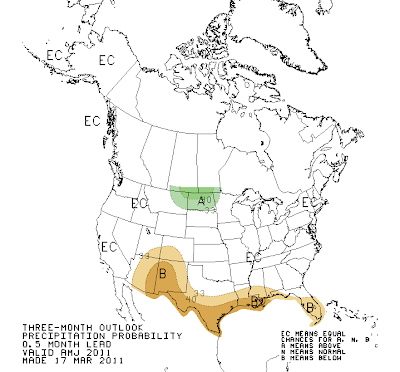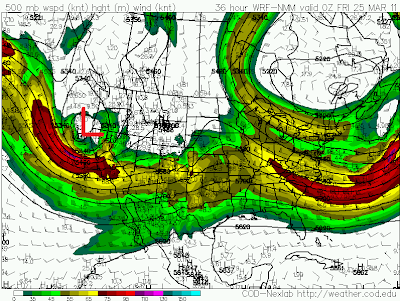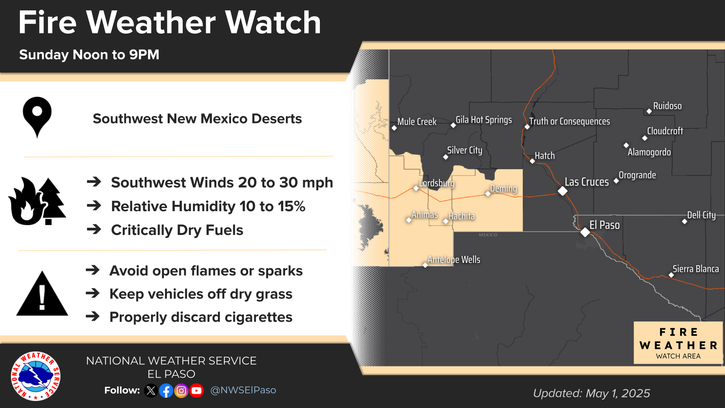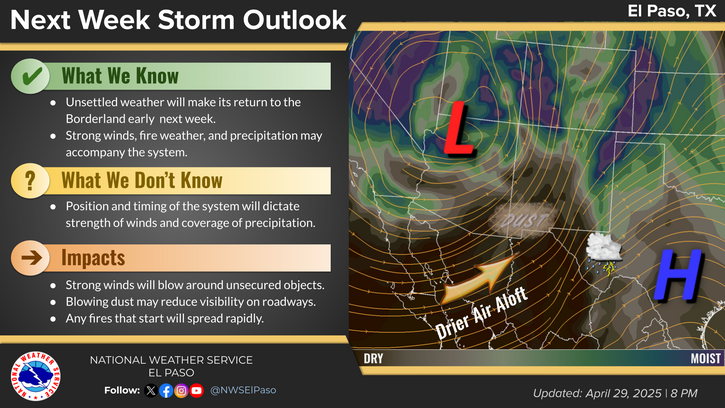Please View This Introductory Video Courtesy Of The Albuquerque
National Weather Service Office Concerning:
Severe thunderstorms are defined by the National Weather Service as downdraft winds in excess of 58 miles an hour and/or hail 1 inch in diameter or greater.
Severe thunderstorms are reported each year in all New Mexico counties. Severe thunderstorms peak in the east during April through June and statewide July through August.
The Storm Prediction Center in Norman, Oklahoma issues a SEVERE THUNDERSTORM WATCH to give you advance notice that severe thunderstorms are possible in your area. This gives you time to make preliminary plans for moving to a safe location if a severe thunderstorm warning is issued. The SPC also issues convective outlooks (see this SPC link) for days 1 through 3.
A SEVERE THUNDERSTORM WARNING is an urgent announcement that a severe thunderstorm has been reported or is imminent and warns you to take cover. Severe thunderstorm warnings are issued by local NWS offices.
What you can do before a storm strikes...
- Know the county you are located in and the names of the major nearby cities or towns.
- Severe weather warnings and statements are issued by county and reference major cities.
- Check the latest weather forecast and hazardous weather outlook.
- Watch for signs of an approaching thunderstorm.
- If a storm is approaching, tune to NOAA Weather Radio and/or AM/FM radio.
- Postpone outdoor activities if thunderstorms are imminent. This is your best way to avoid being caught in a dangerous situation.
When thunderstorms approach...
Outdoors:
- REMEMBER if you can hear thunder, you are close enough to a storm to be struck by lightning.
- If possible, move to a sturdy building or hard top automobile.
- If safe shelter is not available, find a low spot away from trees, fences, and poles.
- Squat low to the ground on the balls of your feet, place your hands on your knees with your head between them.
- Make yourself the smallest target possible and minimize your contact with the ground.
- Do not take shelter in small sheds, rock outcroppings, under isolated trees, or in convertible automobiles.
- If boating or swimming, get out of boats and away from the water, get to land and find shelter immediately.
- When boating, always stay tuned to the latest weather reports and return to safe harbor before the strong winds arrive.
Indoors:
- Stay away from windows and go to the safest location on the lowest level of your home.
- Unplug unnecessary appliances and only use the phone for emergencies.
- Mobile homes are especially vulnerable to the high winds of a thunderstorm and are subject to overturning and rolling if not properly anchored to the ground. As a minimum, the frame should be secured with heavy steel straps. Heavy straps should also go over the top of the home with both frame and over the top ties secured in concrete footings.
The Truth Is Stranger Than Fiction!























